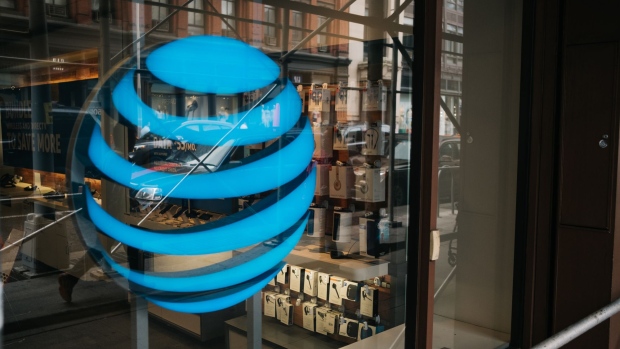Jan 24, 2022
Stock Rout Is Sparing Companies With Big Debt Loads, Citi Says
, Bloomberg News

(Bloomberg) -- This year’s stock market drop has been mild for blue-chip companies with big debt loads, signaling that the largest borrowers may be better off than the equity market as a whole and the outlook for corporate bonds is less bleak.
The 50 companies with the most bonds outstanding, excluding banks, have seen their shares fall less than 1% this year through Friday, according to Citigroup corporate debt strategists led by Daniel Sorid. That is based on investment-grade borrowers, and weights returns by the amount of debt a company has outstanding.
The S&P 500 index, which weights companies based on their stock market value, was down 7.7% through Friday, and is plunging further on Monday.
The figures underscore how stock market drops are unevenly distributed. Shares of three of the largest U.S. telecom companies, including AT&T, were up in 2022 through Friday, according to Citigroup. These companies are some of the biggest issuers in the U.S. high-grade corporate bond market, but are further down the list in terms of U.S. stock market value.
“Stock index weakness this year paints, thus far, a misleadingly bleak indicator of risk sentiment for credit investors,” the strategists wrote in a report dated Jan. 23.
Strong Results
Financial results are still relatively strong for high-grade companies, at least for now, Citigroup said. Revenue grew about 11% in 2021, while debt only grew about 8% over the period, according to the bank’s debt-weighted average of a sample of 24 issuers.
But there are signs that results are getting a little worse. The income available to pay debt, known as earnings before interest, taxes, depreciation and amortization, contracted in the latest quarter among the 24 companies.
And U.S. corporate bond investors have grown a bit more skittish in 2022. Risk premiums for high-grade company debt have widened by 0.08 percentage point since the end of last year, to 1 percent as of Friday, according to Bloomberg index data.
That may be in part because companies have sold so much investment-grade debt in 2022: more than $137.3 billion, compared with around $95 billion at this point last year.
Heavy Sales
There may be disproportionately high issuance for the next few months, as borrowers look to lock in low borrowing costs before the Federal Reserve starts hiking rates, Citigroup strategists wrote. Between 2010 and 2021, gross issuance through January 21 represented about 7.8% of the year’s supply on average, the strategists wrote.
In 2017 and 2018, years the Fed was hiking, the first few weeks of the year were closer to about 9% of total annual issuance. The central bank could start tightening the money supply as soon as March.
Investors looking to make a contrarian play should consider buying bonds from U.S. banks, which have lagged in recent weeks because of heavy issuance, according to the strategists.
©2022 Bloomberg L.P.